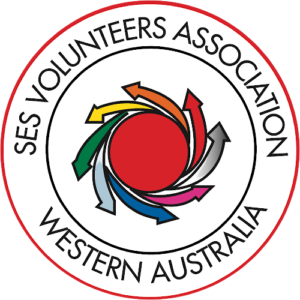SESVA Management Committee member Lower South West, Les Hayter ESM, attended the DFES Volunteer Training Forum in Belmont on Saturday 20th April 2024, along with SESVA Executive members, volunteers from SES units and the other services, as well DFES staff.
“I came away from this forum with renewed vision and faith in some DFES actions and a re- turn to higher level recognition of the value of SES Volunteers in the Natural Hazards response area,” reveals Les.
For those who don’t know, Les is the former and last SES State Training Manager FESA/DFES and Les also served as the Secretary to National Education and Training Committee (NETC) of the Australian Council of State/Territory Emergency Services (ACSES), and is the current National SESVA (NSESVA) representative to the Public Skills Australia – Public Safety Training Package Review (SES Qualifications & Competency Standards).
Les provides his observations here with more to follow in the June edition of the Newsletter:
“It was my first official outing with the SES Volunteers Association of WA and, in fact, my very first meeting of the Volunteer Training Advisory Group (VTAG) as a rep for the WA SESVA. The forum was for members of all the VTAGs and the Associations TAG (ATAG) with key Learning and Development staff attending from the DFES Academy, Cockburn Central, the Bushfire Centre of Excellence and more. The aspects covered were extensive and very relevant now. It will not be wasted effort if even half the items are addressed in the following months and year ahead.
At this point I am going to give a bit of background because I was there and was a big part of it!
In the earlier years of WA SES we trained to a national standard developed nationally by the Commonwealth Government using all emergency agencies to develop overarching theory and technique booklets – Australian Emergency Manuals (AEM’s). These were accompanied by training resources developed at the National SES Level into what were termed Training Resource Packages (TRPs). These are not the same as the National Training Packages we see today which are a collection of skills and qualifications for multiple sectors of the Emergency Services (including Fire and SES). Each jurisdiction (State or Territory) would add any regional differences using a supplementary set of notes (i.e. WASES Supplements) about those differences to the TRP. These were gradually replaced by Training Resource Kits (TRKs) which we continue to see today, though some of the AEMs and TRPs can still be found in some Unit training offices.
In summary, our initial training for as long as I can go back was to a national standard (AEMs with TRPs). Importantly they were also ‘recognised and transferable’ between states and territories.
Then we went onto the Public Safety Training Package and most SES skills and knowledge were systematically transformed from
TRPs into the TRKs we see today since 2001. Note that not all skills had alignment to a national competency.
But something changed – DFES decided to make sure they addressed the operational roles of members performing tasks under the DFES umbrella, but any reference and equity (alignment) with the national training standards (Units of Competency) within the Public Safety Training Package was removed from the TRKs. Hence, we don’t get a straight-forward process known as Recog- nition of Current Competency (RCC) with other SES States and Territories.
This is one of our major issues right now and it was covered at the forum in some detail.”

